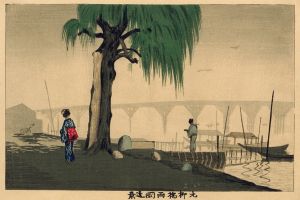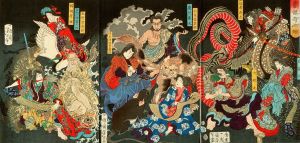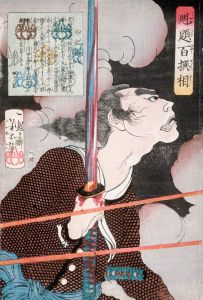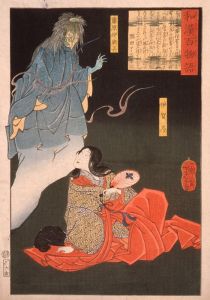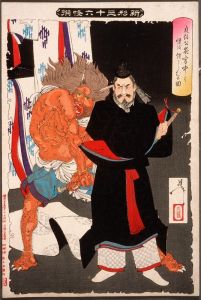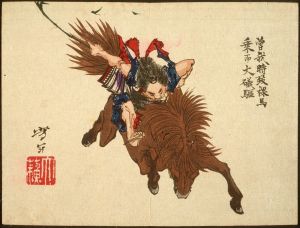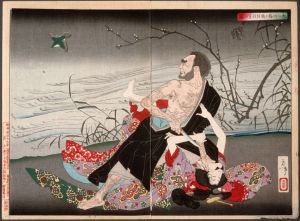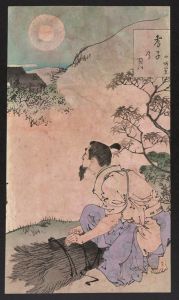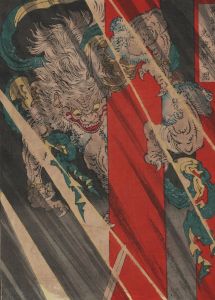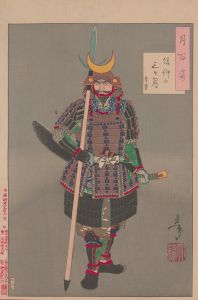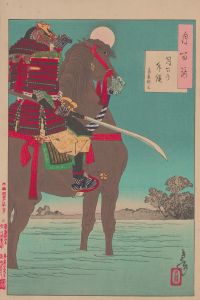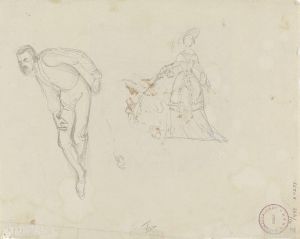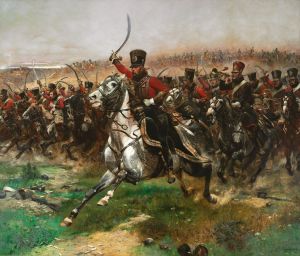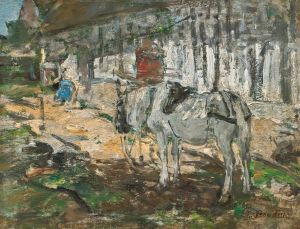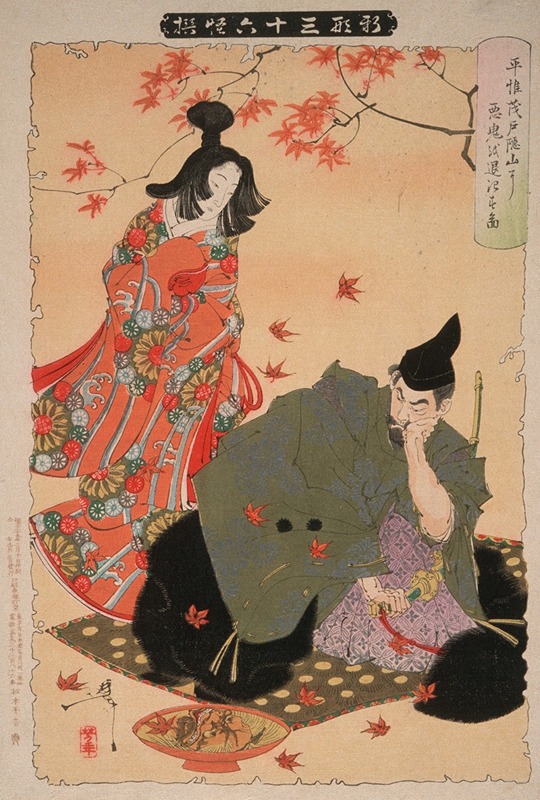
Taira No Koremochi Subjugates the Evil Demon at Togakushi Mountain
A hand-painted replica of Tsukioka Yoshitoshi’s masterpiece Taira No Koremochi Subjugates the Evil Demon at Togakushi Mountain, meticulously crafted by professional artists to capture the true essence of the original. Each piece is created with museum-quality canvas and rare mineral pigments, carefully painted by experienced artists with delicate brushstrokes and rich, layered colors to perfectly recreate the texture of the original artwork. Unlike machine-printed reproductions, this hand-painted version brings the painting to life, infused with the artist’s emotions and skill in every stroke. Whether for personal collection or home decoration, it instantly elevates the artistic atmosphere of any space.
Tsukioka Yoshitoshi (1839–1892) was a prominent Japanese ukiyo-e artist known for his innovative and dramatic woodblock prints. One of his notable works, Taira no Koremochi Subjugates the Evil Demon at Togakushi Mountain, depicts a legendary episode from Japanese folklore. This print is part of Yoshitoshi's celebrated series New Forms of Thirty-Six Ghosts (Shinkei Sanjūrokkaisen), which was published between 1889 and 1892. The series explores supernatural themes and ghostly tales from Japanese history and mythology, often blending traditional storytelling with Yoshitoshi's unique artistic style.
The artwork illustrates the story of Taira no Koremochi, a samurai of the Heian period (794–1185), who is said to have encountered a demon disguised as a beautiful woman while hunting in the mountains of Togakushi. According to the legend, Koremochi was invited to a banquet by the woman, who revealed her true form as a fearsome demon after lulling him into a false sense of security. Armed with a divine sword, Koremochi courageously fought and defeated the demon, showcasing his bravery and martial skill.
In Yoshitoshi's depiction, the scene is rendered with dramatic intensity, characteristic of his later works. The composition captures the climactic moment of confrontation, with Koremochi poised to strike the demon. Yoshitoshi's use of bold lines, vivid colors, and intricate detailing enhances the dynamic energy of the scene. The contrast between the samurai's calm determination and the demon's ferocity exemplifies Yoshitoshi's mastery in conveying emotion and movement.
This print reflects Yoshitoshi's interest in traditional Japanese folklore and his ability to reinterpret these stories for a late 19th-century audience. By the time this series was created, the ukiyo-e tradition was in decline due to the rise of modern printing techniques and Western art influences. Yoshitoshi's work, however, revitalized interest in the genre and is now regarded as a bridge between classical and modern Japanese art.
Taira no Koremochi Subjugates the Evil Demon at Togakushi Mountain is an example of Yoshitoshi's ability to merge storytelling with visual artistry, making it a significant piece in the history of Japanese woodblock printing. Today, it is appreciated not only for its artistic merit but also for its role in preserving and celebrating Japan's rich cultural heritage.





